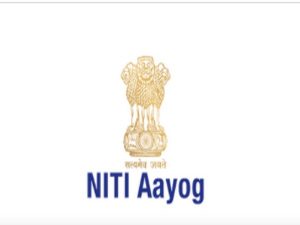Seaweed Value Chain Development : NITI Aayog Report

NITI Aayog has laid down a comprehensive roadmap to promote seaweed cultivation in India in its report published titled “Strategy for the development of Seaweed Value Chain”.
- This includes steps for research, investment, training, infrastructure development, and market promotion toincrease seaweed production, which can benefit the environment, economy, and local communities.
- Seaweeds are the primitive, marine non-flowering algae without root, stem and leaves and play a major role inmarine ecosystems.
- Large seaweeds form dense underwater forests known as kelp forests, which act as underwater nurseriesfor fish, snails and sea urchins.
- Some species of seaweeds are Gelidiella acerosa, Gracilaria edulis, Gracilaria crassa, Gracilaria verrucosa,Sargassum spp. and Turbinaria spp.
- It is classified into green (Chlorophyta), brown (Phaeophyta), and red (Rhodophyta) groups.
- Global Seaweed production (cultivation+collection) amounted to around 35.8 million tonnes in 2019, of which wild collection remained at 1.1 million tonnes.
- Eastern and Southeastern Asia regions dominated the cultivation landscape with 97.4% of globalproduction, while Americas and Europe primarily depend on wild collection. Indonesia is a major producer of seaweed.
- Globally, the species Kappaphycus alvarezii and Eucheuma denticulatum account for 27.8% of totalseaweed production through farming.
- The seaweed industry is projected to grow at a CAGR of 2.3% from 2022 to 2030.
- India harvests approximately 33,345 tonnes (wet weight) of seaweeds annually from natural beds,primarily in Tamil Nadu, involving 5,000 families.
- India’s annual seaweed revenue, around Rs 200 crores, contributes less than 1% of global production.
- The government aims to increase the allied sector’s share of gross value added in agriculture to 9% in 2024-25 from 7.28% in 2018-19.
- In 2021, the global seaweed market stood at USD 9.9 billion.
- Major trading countries included China, Indonesia, the Philippines, the Republic of Korea, and Malaysia.
- Korea leads in seaweed exports with over 30% market share, while China holds a similar share in seaweed- based hydrocolloids (thickening and gelling agents derived from various types of seaweed).




